Everyday Mathematics 2nd Grade Answer Key Unit 2 Fact Strategies
Everyday Math Grade 2 Home Link 2.1 Answer Key
Family Note
In today’s lesson we counted by 100s, 10s, and 1s to calculate the values of bill combinations. We also played The Exchange Game with money to practice making exchanges between $1, $10, and $100 bills.
Please return this Home Link to school tomorrow.
Answer the questions.
Question 1.
How many $10 bills are the same as ten $1 bills?
Answer:
1 = one $10 bills are the same as ten $1 bills,
Explanation:
Given to find how many $10 bills are the same as ten $1 bills,
as ten $1 bills = $1 X 10 = $10 bills, therefore 1 =
one $10 bills is the same as ten $1 bills respectively.
Question 2.
How many $1 bills are the same as one $100 bill?
Answer:
100 = 100 $1 bills are the same as one $100 bill,
Explanation:
Given to find how many $1 bills are the same as one $100 bills,
as $1 bills = $1 X 100 = 100, therefore 100 =
100 $1 bills is the same as one $100 bills respectively.
Question 3.
How many $10 bills are the same as one $100 bill? __
Do your own.
Answer:
10 = ten $10 bills are the same as one $100 bill,
Explanation:
Given to find how many $10 bills are the same as one $100 bills,
as $10 bills = $10 X 10 = 100, therefore 10 =
ten $10 bills is the same as one $100 bills respectively.
Question 4.
How many $1 bills are the same as __ $10 bills? __
Answer:
10 = ten $1 bills are the same as $10 bills,
Explanation:
Given to find how many $1 bills are the same as one $10 bills,
as $1 bills = $10 X 10 = 100, therefore 10 =
$10 bills is the same as one $100 bills respectively.
For each problem, find how much money there is in all.

Explanation:
Given two $10 and three $1, So upon adding
we will get $10 + $10 + $1 + $1 + $1 = $23.
Question 5.

Answer:
$14,
Explanation:
Given one $10 and four $1, So upon adding
we will get $10 + $1 +$1 + $1 + $1 = $14.
Question 6.

Answer:
$29,
Explanation:
Given two $10 and nine $1, So upon adding we will
get $10 + $10 + $1 +$1 + $1 + $1 + $1 +$1 + $1 + $1 +$1 = $29.
Question 7.
![]()
Answer:
$120,
Explanation:
Given one $100 and two $10, So upon adding we will
get $100 + $10 + $10 = $120.
Everyday Math Grade 2 Home Link 2.2 Answer Key
Writing Addition Number Stories
Family Note
Before beginning this Home Link, review the vocabulary from the Unit 2 Family Letter with your child: number story, label, unit box, and number model. Encourage your child to make up and solve addition number stories and write addition number models for the stories.
Stress that the answer to a question makes more sense if it has a label.
Please return this Home Link to school tomorrow.
Question 1.
Tell someone at home what you know about number stories, labels, unit boxes, and number models. Write an addition number story for the picture. Write the answer and an addition number model.
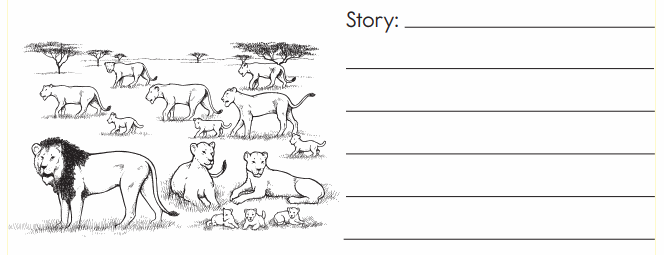
Number model:
Answer:
Number stories :
They are simple descriptions of either real or
imagined events that involve numbers.
Label:
A label is when you are answering a word problem,
for example:
I have 5 chocolate bars and I gave away 2.
How many do I have now?
So its 5-2=3 right? But we have to label it.
So instead of saying “3” my answer would be: 3 chocolate bars.
Unit boxes:
Unit box a box that contains the label or unit
of measure for the numbers in a problem.
A number model in math is a sentence that illustrates
how the parts of a number story are related.
The equation may include addition, subtraction, division and
multiplication and may be expressed as words or in number form.
Story:
In a forest as shown in the picture there are
9 lions in standing and 5 lions are sitting so
overall how many number of lions are there?,
therefore number model is 9 + 5 = 14.
Explanation:
Wrote about number stories, labels, unit boxes, and
number models above, Wrote one story about picture and
addition number model is 9 + 5 = 14.
Practice
Question 2.
2 + 2 = _4_
Answer:
2 + 2 = 4,
Story: I have 2 mangoes my friend gave 2 more
how many in total have in all?
Number model: 2 + 2 =4,
Explanation:
Wrote story for 2 + 2 above,
Adding 2 mangoes to 2 mangoes
we will get 4 mangoes in all
So number model is 2 + 2 = 4.
Question 3.
4 + 4 = __8_
Answer:
4 + 4 = 8,
Story:
Four ducks are already in the pool, four more joined,
how many ducks are there in all in the pool now?
Number model: 4 + 4 =8,
Explanation:
Wrote story for 4 + 4 above,
Adding 4 ducks to 4 ducks we will get 8 ducks in all,
So number model is 4 + 4 = 8.
Question 4.

Answer:
5 + 5 =10,
Story:
My friend have 5 yellow pencils and I gave
5 green pencils, how many pencils does she have in all?
Number model: 5 + 5 =10,
Explanation:
Wrote story for 5 + 5 above,
Adding 5 yellow pencils to 5 green pencils
we will get 10 pencils in all,
So number model is 5 + 5 = 10.
Question 5.

Answer:
7 + 7 = 14,
Story:
Number model: 7 + 7 =14,
Story:
Carol have 7 moral story books and 7 comic books,
In all how many books does she has?
Explanation:
Wrote story for 7 + 7 above,
Adding 7 moral story books to 7 comic books
we will get 14 books in all,
So number model is 7 + 7 = 14.
Everyday Math Grade 2 Home Link 2.3 Answer Key
Doubles Facts and Combinations of 10
Family Note
In second grade children learn and practice many strategies to help them develop fluency with basic addition facts. These strategies are based on facts that children studied in first grade: doubles facts (facts in which a number is added to itself) and combinations of 10 (number pairs that add to 10). Today we sorted facts based on whether they were doubles, combinations of 10, or both.
Please return this Home Link to school tomorrow.
Question 1.
Complete the addition facts.
a. 2 + 2 = _4_
b. _10_ = 5 + 5
c. _0_ = 0 + 0
d. 1 + 1 = _2_
e. 
14
f. 
6 – 3 = 3,
g. 
16
Answer:
a. 2 + 2 = 4,
Explanation:
Adding 2 to 2 we will get 4.
b. 5 + 5 = 10,
Explanation:
Adding 5 to 5 we will get 10.
c. 0 + 0 = 0,
Explanation:
Adding 0 to 0 we will get 0.
d. 1 + 1 = 2,
Explanation:
Adding 1 to 1 we will get 2.
e. 7 + 7 =14,
7 + 7 = 14,
Explanation:
Adding 7 to 7 we will get 14.
f. 3 + 3 = 6,
Explanation:
To get missing addition nummber,
We subtract 3 from 6 as 6 -3 = 3,
So that 3 + 3 = 6.
Therefore adding 3 to 3 we will get 6.
g. 8 + 8 = 16,
Explanation:
Adding 8 to 8 we will get 16.
Question 2.
Write four different addition facts with 10 as the sum.
Example: 10 = 4 + 6
a. 10 = _10_ + _0_
b. 10 = _9_ + _1_
c. _8_ + _2_ = 10
d. _7_ + _3_ = 10
Answer:
a. 10 = 10 + 0,
b. 10 = 9 + 1,
c. 10 = 8 + 2,
d. 10 = 7 + 3,
Explanation:
The addition facts with 10 as the sum are
a.10 = 10 + 0, if we add 0 to 10 we will get 10,
b. 10 = 9 + 1, if we add 1 to 9 we will get 10,
c. 10 = 8 + 1, if we add 2 to 8 we will get 10,
d. 10 = 7 + 3, if we add 3 to 7 we will get 10.
Everyday Math Grade 2 Home Link 2.4 Answer Key
The Making-10 Strategy
Family Note
Children learned a new strategy called “the making-10 strategy” to help them develop fluency with the basic addition facts. Success with this strategy depends on children knowing the number pairs that add to 10 or the basic addition facts that have a sum of 10.
Please return this Home Link to school tomorrow.
Question 1.
Write all the addition facts that have a sum of 10.
Hint: There are 11 different facts.
Use combinations of 10 to help figure out the sums.
Example: 6 + 5 = 11
Helper combination of 10: 6 + 4 = 10,
Answer:
10 + 0 = 10, 9 + 1 = 10, 8 + 2 = 10,
7 + 3 = 10, 6 + 4 = 10, 5 + 5 = 10,
4 + 6 = 10, 3 + 7 = 10, 2 + 8 = 10,
1 + 9 = 10, 0 + 10 = 10,
Explanation:
The addition facts that have a sum of 10
are when 0 is added to 10 we will get 10,
1 added to 9 we will get 10,
2 added to 8 we will get 10,
3 added to 7 we will get 10,
4 added to 8 we will get 10,
5 added to 5 we will get 10,
6 added to 4 we will get 10,
7 added to 3 we will get 10,
8 added to 2 we will get 10,
9 added to 1 we will get 10,
10 added to 0 we will get 10.
Question 2.
8 + 3 = _11__
Helper combination of 10: _8_ + _2_ = __10 __
Answer:
8 + 3 = 11,
Helper combination of 10: 8 + 2 = 10,
Explanation:
Given 8 + 3, So adding 3 to 8 we will get 11 and
Helper combination of 10 is adding 2 to 8 we will get 10.
Question 3.
4 + 7 = _11__
Helper combination of 10: _4__ + _6__ = _10__
Answer:
4 + 7 = 11,
Helper combination of 10: 4 + 6 = 10,
Explanation:
Given 4 +7, So adding 7 to 4 we will get 11 and
Helper combination of 10 is adding 6 to 4 we will get 10.
Question 4.
9 + 3 = _12_
Helper combination of 10: _9__ + _1__ = _10__
Tell someone at home how knowing combinations of 10
can help you solve other facts.
Answer:
9 + 3 = 12,
Helper combination of 10: 9 + 1 = 10,
Explanation:
Given 9 + 3, So adding 3 to 9 we will get 12 and
Helper combination of 10 is adding 1 to 9 we will get 10.
Everyday Math Grade 2 Home Link 2.5 Answer Key
Helper Facts
Family Note
Today we learned about helper facts. Helper facts are facts that we already know and that we can use to help us find answers to facts we may not know. Because we learned the doubles facts (such as 2 + 2 = 4 and 3 + 3 = 6) in first grade, we can use them now as helper facts. For example, knowing 4 + 4 = 8 can help us figure out the answer to 4 + 5. We see that 4 + 5 is 1 more than 4 + 4, so the
answer is 9. We can also use 4 + 4 = 8 to figure out the answer to 4 + 3. We see that 4 + 3 is 1 less than 4 + 4, so the answer is 7.
Please return this Home Link to school tomorrow.
Helper facts can help you figure out answers to other facts.
Doubles facts can be helper facts.
Example:
3 + 2 = ? 3 + 4 = ?
Helper fact: 3 + 3 = 6
3 + 2 = 5 3 + 4 = 7
Question 1.
5 + 4 = ? 5 + 6 = ?
Helper fact: 5 + 5 = _10__
5 + 4 = _9_ 5 + 6 = _11_
Answer:
Helper fact: 5 + 5 = _10__
5 + 4 = _9_ 5 + 6 = _11_
Question 2.
? = 7 + 6 ? = 7 + 8
Helper fact: = _14_ 7 + 7
_13_ = 7 + 6 ___ , 15= 7 + 8
Answer:
Helper fact: = _14_ 7 + 7
_13_ = 7 + 6 ___ , 15= 7 + 8
Solve. Write a helper fact that can help you figure out the answer.
Question 3.
4 + 3 = ?
Helper fact: _6_ + _6_ = _12__
4 + 3 = _7__
Answer:
Helper fact: _4_ + _4_ = _8__, or 3 + 3 = 6,
4 + 3 = _7__,
Explanation:
4 + 3 = 7,
adding 3 to 4 we will get 7,
Helper fact is adding 4 to 4 we will get 8 and
adding 3 to 3 we will get 6.
Tell someone at home what you know about helper facts.
Helper facts :
Facts that we already know and that we can use to
help us find answers to facts we may not know.
Because we learned the doubles facts
(such as 2 + 2 = 4 and 3 + 3 = 6) in first grade,
we can use them now as helper facts. For example,
knowing 2 + 2 = 4 can help us figure out the answer to 2 + 3.
Everyday Math Grade 2 Home Link 2.6 Answer Key
The Turn-Around Rule for Addition
Family Note
Today we learned about the turn-around rule for addition, which says that you can add two numbers in either order and get the same result. For example: 4 + 3 = 7 and 3 + 4 = 7. Knowing this rule can help children learn basic addition facts.
Please return this Home Link to school tomorrow.
Use the turn-around rule to write two different addition facts for each domino.
Question 1.

Answer:

Explanation:
Given 2 + 4 = 6 and turn-around rule is 4 + 2 = 6.
Question 2.

Answer:

Explanation:
Given 5 + 3 = 8 and turn-around rule is 3 + 5 = 8.
Question 3.

Answer:
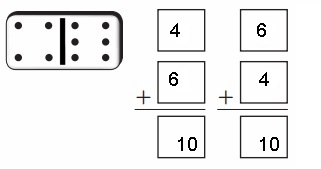
Explanation:
Given 6 + 4 = 10 and turn-around rule is 4 + 6 = 10.
Question 4.

Answer:

Explanation:
Given 3 + 8 = 11 and turn-around rule is 8 + 3 = 11.
Tell someone at home what you know about the turn-around rule.
Facts Practice
Solve.
Question 5.

Answer:
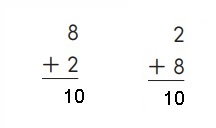
Explanation:
Given 8 + 2 = 10 and turn-around rule is 2 + 8 = 10.
Question 6.

Answer:

Explanation:
Given 2 + 8 = 10 and turn-around rule is 8 + 2 = 10.
Question 7.

Answer:
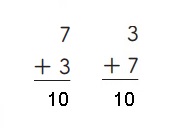
Explanation:
Given 7 + 3 = 10 and turn-around rule is 3 + 7 = 10.
Question 8.

Answer:

Explanation:
Given 3 + 7 = 10 and turn-around rule is 7 + 3 = 10.
Everyday Math Grade 2 Home Link 2.7 Answer Key
The Turn-Around Rule
Family Note
Today we continued exploring the turn-around rule. In this lesson, we created subtraction number stories and examined whether the turn-around rule works for subtraction. We decided the turnaround rule does NOT work for subtraction because changing the order of the numbers produces different results. Creating number stories, writing number models for number stories, and using the
turn-around rule appropriately will all be revisited throughout the year. The problems on this page provide practice with the turn-around rule for addition.
Please return this Home Link to school tomorrow.
Question 1.
Write two number models you can use to solve this number story.
Bill picked 6 peaches from a tree. Roberta picked 8.
How many peaches do they have in all?
Number model: _6 + 8 =14__
Number model: _8 + 6 = 14,__
Answer:
Number model: 6 + 8 = 14,
Number model: 8 + 6 = 14,
Explanation:
Given Bill picked 6 peaches from a tree. Roberta picked 8
So two number models are
1. 6 + 8 =14 and 2. 8 + 6 = 14,
Therefore number of peaches they do have in all are 14.
Question 2.
Complete each number sentence and then
write the turn-around number sentence.

Answer:

Explanation:
The number sentence is adding 3 to 12 we will get 15,
adding 3 to 8 we will get 11, now the turn-around
number sentence is adding 12 to 3 we will get 15 and
adding 8 to 3 we will get 11 as
Number sentence : 12 + 3 = 15,
Turn around number sentence : 3 + 12 = 15,
Number sentence : 8 + 3 = 11,
Turn around number sentence : 3 + 8 = 11.
Practice
Question 3.
Solve the facts.
a. 3 + _3_ = 6
b. _5_ + 5 = 10
c. 14 = _7_ + 7
d. 12 = 6 + _6_
Answer:
a. 3 + _3_ = 6,
Explanation:
Given 3 + ___ = 6, So the missing number is 6 – 3 = 3,
therefore 3 + 3 = 6.
b. _5_ + 5 = 10,
Explanation:
Given ___ + 5 = 10, So the missing number is 10 – 5 = 5,
therefore 5 + 5 = 10.
c. 14 = _7_ + 7,
Explanation:
Given ___ + 7 = 14, So the missing number is 14 – 7 = 7,
therefore 7 + 7 = 14.
d. 12 = 6 + _6_,
Explanation:
Given 6 + ___ = 12, So the missing number is 12 – 6 = 6,
therefore 6 + 6 = 12.
Everyday Math Grade 2 Home Link 2.8 Answer Key
Counting Up
Family Note
Everyday Mathematics encourages children to use a variety of strategies to solve problems. This allows children to develop number sense rather than simply memorizing steps or learning a shortcut. In today’s lesson children used various strategies to add, including counting up on a number line and on a number grid.
Please return this Home Link to school tomorrow.
Find the sum in two different ways.
56 + 10 = ? 56 + 10 = _66_
Question 1.
Use the number line and show your hops. Record your answer.
 Answer:
Answer:

Explanation:
Used the number line and showed my hops from 56 to
10 times right and got 66 as shown above.
Therefore the sum of 56 + 10 = 66.
Question 2.
Use a number grid and draw arrows to show your counts. Record your answer.
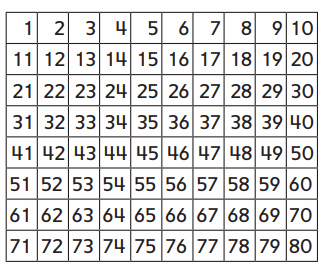
Answer:
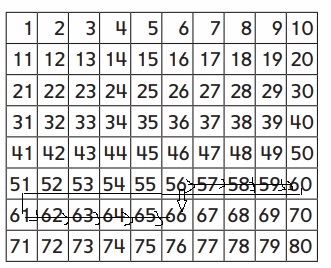
Explanation:
Used a number grid and drawn arrows to show my counts and-
Recorded my answer as shown above as 56 + 10 = 66.
Everyday Math Grade 2 Home Link 2.9 Answer Key
Even Numbers and Equal Addends
Family Note
Today we identified numbers as even or odd. We learned that when we count by 2s, we can look for a pattern in the digits in the ones place to help us identify even and odd numbers. We wrote number models to express even numbers as the sums of two equal addends and odd numbers as the sums of two equal addends plus or minus 1. We also learned a new game called Evens and Odds.
Please return this Home Link to school tomorrow
Draw a circle around the even numbers.
Draw a line below the odd numbers.

Answer:

Explanation:
Drawn a circle around the even numbers for
6, 18, 8, 14, 4, 10, 16, 2, 20 and 12,
Drawn a line below the odd numbers for
9, 3, 11, 17, 15, 1, 7, 19, 13, 5.
Pick one of your circled numbers. Tell someone at
home how you know it is even.
Answer:
2 because it is divisble by 2,
Explanation:
Picked one of my circled number 2, The number 2 is
even because it is divisible by 2 leaving a remainder 0.
Pick one of your underlined numbers. Tell someone
at home how you know it is odd.
Answer:
17 because it is not divisble by 2,
Explanation:
Picked one of my underlined number 17, The number 17 is
odd because it is not divisible by 2 leaving a remainder 1.
Match.
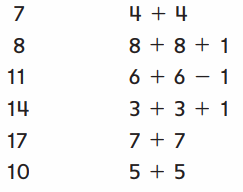
Answer:

Explanation:
Matched the numbers as shown above as
7 with 3 + 3 +1 as 3 + 3 + 1 = 7,
8 with 4 + 4 as 4 + 4 = 8,
11 with 6 + 6 – 1 as 6 + = 12 and minus 1 equals to 11,
14 with 7 + 7 as adding 7 to 7 we will get 14,
17 with 8 + 8 + 1 as 8 + 8 + 1 equal to 17,
10 with 5 + 5 as adding 5 to 5 we will get 10.
Everyday Math Grade 2 Home Link 2.10 Answer Key
Name-Collection Boxes
Question 1.
Give the Family Note to someone at home. Show that person the name-collection box below. Explain what a name-collection box is used for.
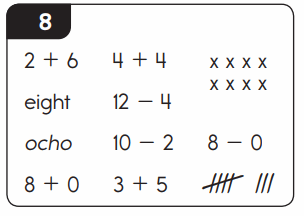
Answer:
Name-collection box helps us to collect
equivalent names for the same number,
Explanation:
Shown the person the name-collection box as shown above,
it helped us to collect equivalent names wrote differently
for the same number 8.
Question 2.
Write ten names in the 10 box.
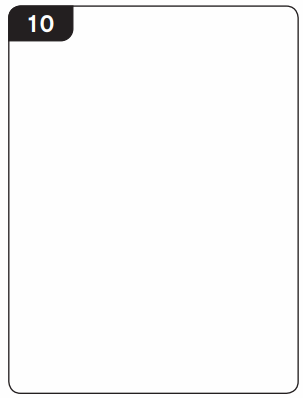
Answer:
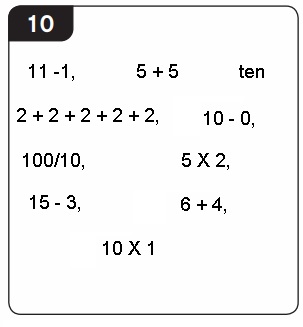
Explanation:
Wrote ten names in the 10 box as
1. 11 – 1, 2. 5 + 5, 3. ten, 4. 2 + 2 + 2 + 2 + 2, 5. 10 – 0,
6. 100/10, 7. 5 X 2, 8. 15 – 3, 9. 6 + 4 and 10. 10 X 1 for 10.
Question 3.
Make up your own name-collection box.
Write at least ten names in the box.
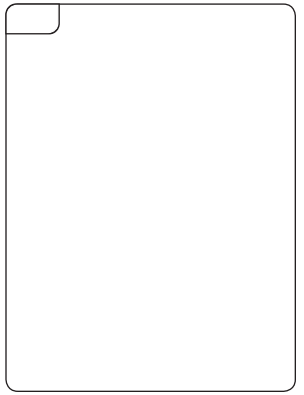
Answer:
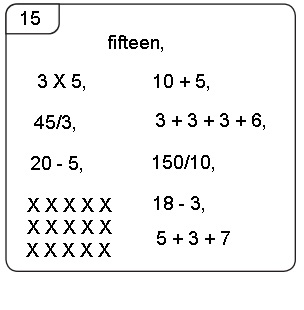
Explanation:
Made up my own name-collection box of 15,
Wrote ten names in the box as 1. fifteen,
2. 3 X 5, 3. 10 + 5, 4. 45/3, 5. 3 + 3 + 3 + 6,
6. 20 – 5, 7. 150/10, 8. 3 times 5 x’s each, 9. 18 – 3 and
10. 5 + 3 + 7.
Everyday Math Grade 2 Home Link 2.11 Answer Key
Playing Name That Number
Family Note
In today’s lesson children discussed how to name a number in different ways. We played a game called Name That Number by using addition and subtraction to name a target number.
Please return this Home Link to school tomorrow.
Write two number sentences to show each target number.

Question 1.

Answer:

Explanation:
The two number sentences to show target number 12 is
1. Number sentence : 6 + 6 = 12, adding 6 to 6 we will get 12,
2. Number sentence : 2 + 10 = 12, adding 10 to 2 we will get 12.
Question 2.

Answer:
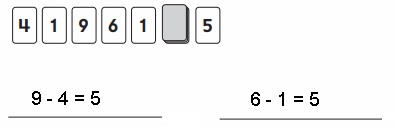
Explanation:
The two number sentences to show target number 5 is
1. Number sentence : 9 – 4 = 5, subtracting 4 from 9 we will get 5,
2. Number sentence : 6 – 1 = 5, subtracting 1 from 96 we will get 5.
Question 3.

Answer:

Explanation:
The two number sentences to show target number 6 is
1. Number sentence : 4 + 2 = 6, adding 2 to 4 we will get 6,
2. Number sentence : 9 – 3 = 6, subtracting 3 from 9 we will get 6.
Practice
Solve.
Question 4.
10 = 7 + _3_
Answer:
10 = 7 + _3_,
Explanation:
Given 10 = 7 + __, So subtracting 7 from 10
we will get 3, therefore 10 = 7 + 3.
Question 5.
10 = _1_ + 9
Answer:
10 = _1_ + 9,
Explanation:
Given 10 = __ + 9, So subtracting 9 from 10
we will get 1, therefore 10 = 1 + 9.
Question 6.
10 = 2 + _8_
Answer:
10 = 2 + _8_,
Explanation:
Given 10 = 2 + __, So subtracting 2 from 10
we will get 8, therefore 10 = 2 + 8.
Question 7.
10 = 0 + _10_
Answer:
10 = 0 + _10_,
Explanation:
Given 10 = 0 + __, So subtracting 0 from 10
we will get 10, therefore 10 = 0 + 10.
Everyday Math Grade 2 Home Link 2.12 Answer Key
Frames and Arrows
Family Note
Today your child used Frames-and-Arrows diagrams. These diagrams show sequences of numbers in which one number follows another according to a rule. Frames-and-Arrows diagrams are made up of shapes called frames and arrows connecting the frames. Each frame contains one of the numbers in the sequence. Each arrow stands for the rule, which tells how to find the number that goes in the
next frame. Here is an example of a Frames-and-Arrows diagram. The arrow rule is “Add 2.”

In a Frames-and-Arrows problem, some of the information is left out. To solve the problem, you have to find the missing information. Here are two examples of Frames-and-Arrows problems:
Example 1: Fill in the empty frames according to the rule.


Explanation:
Filled in the empty frames according to the rule as
subtract 4 so wrote 28, 24, 20, 16 and 12 using rule subtract 4 as
28, 28 – 4 = 24, 24 – 4 = 20, 20 – 4 = 16 and
16 – 4 = 12 as shown above.
Example 2: Write the arrow rule in the empty box.

 Explanation:
Explanation:
Wrote the arrow rule in the empty box as Add 5 because
10, 10 + 5 = 15, 15 + 5 = 20, 20 + 5 = 25, 25 + 5 = 25.
Ask your child to tell you about Frames-and-Arrows diagrams. Take turns with your child making up and solving Frames-and-Arrows problems like the examples given above.
Please return the second page of this Home Link to school tomorrow.
Answer:
Frames-and-Arrows diagrams are made up of shapes called frames and arrows that connect the frames.
Each frame contains one of the numbers in the sequence.
Each arrow stands for a rule that tells which number
goes in the next frame.

Explanation:
The arrow rule is add 2, so the frames are
32, 32 + 2 = 34, 34 + 2 = 36, 36 + 2 = 38,
38 + 2 = 40.
2.

Explanation:
The arrow rule is subtract 5, so the frames are
45, 45 – 5 = 40, 40 – 5 = 35, 35 – 5 = 30, 30 – 5 = 25.
3.

Explanation:
The arrow rule is add 10, so the frames are
38, 38 + 10 = 48, 48 + 10 = 58, 58 + 10 = 68,
68 + 10 = 78.
4.

Explanation:
The arrow rule is add 3, so the frames are
8, 8 + 3 = 11, 11 + 3 = 14, 14 + 3 = 17,
17 + 3 = 20.
5.

Explanation:
The arrow rule is subtract 3, so the frames are
21, 21 – 3 = 18, 18 – 3 = 15, 15 – 3 = 12, 12 – 3 = 9.